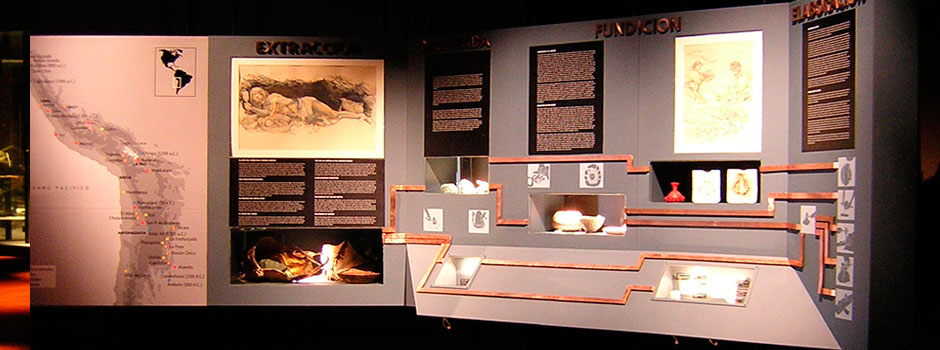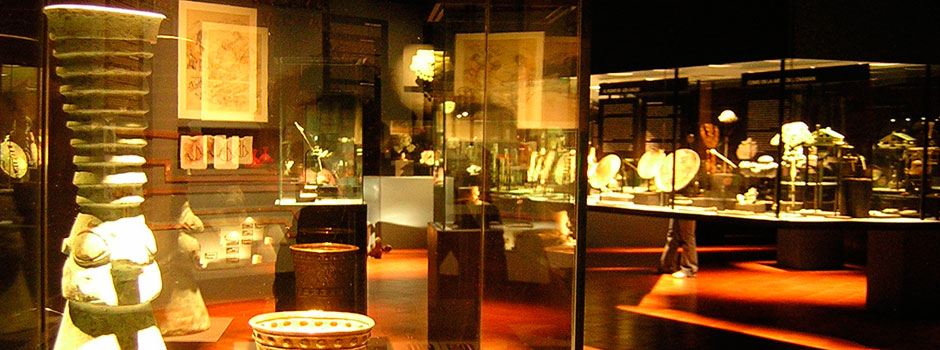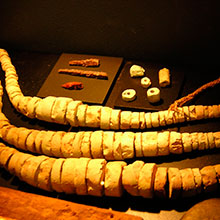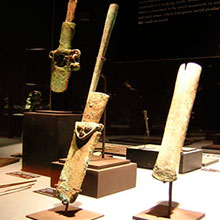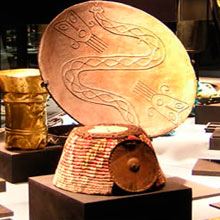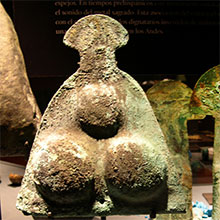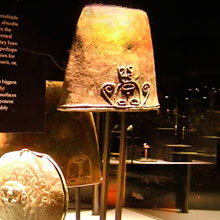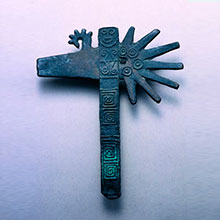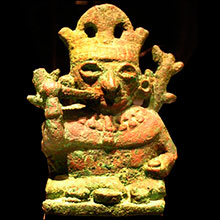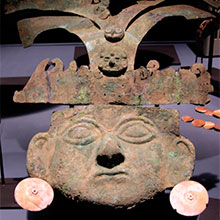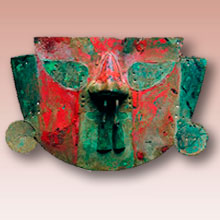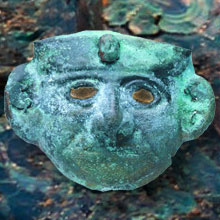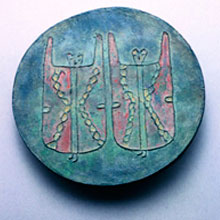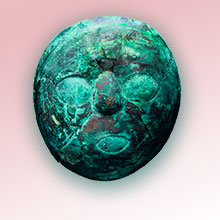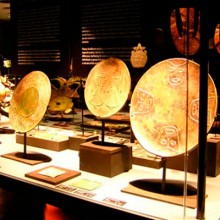The Art of Copper in the Andean World – 2004
Presentation
Metal work is one of the more advanced cultural manifestations in the knowledge and use of natural resources. Around 10 thousand years ago, the human species managed to modify certain physical-chemical characteristics of minerals to produce utensils, tools, weapons and ornaments. To achieve this innovation, the metal workers had to invent and control much more complex techniques than those required to modify other materials such as wood, stone, and bone as well as metals in their “native” state, that is, those metals found in nature in a more or less pure state, that can be directly shaped into objects.
A millenarian tradition
In the pre-Hispanic Andes, this important stage in humanity’s technological development attained its finest expression with copper. Inhabitants of one of the planet’s richest territories in terms of mineral resources, the ancient societies of Peru, Bolivia, Chile and Argentina developed some 4500 years ago multiple centers for extracting, producing and distributing copper. It was a tradition developed by generations of miners, lapidaries, metallurgists and gold and silver workers. This process originated in complete independence from the Old World, and it decisively influenced the copper work developed several centuries later in Central and North America.
The nobility of the red metal
The “red metal”, as copper is called due to its color before oxidation, was the backbone of this fascinating metallurgical development, since it was the basis for all the alloys developed by the copper artisans. It bestowed a distinctive seal or mark on Andean metallurgy. The metal’s nobility lies, precisely, in its ability to mix with other metals or metalloids, like gold, silver, arsenic, nickel and tin. The materials obtained with these alloys possess properties of hardness, tenacity, malleability, color, shine and acoustics, that are unlike those that each of the metals has separately.
The power of copper
This transforming ability of copper led Andean cultures to endow it with symbolic powers. Objects made of copper and its alloys were used ritually to make the earth germinate, to signal a person’s social status or position, to take away life, to protect the deceased in their passage to the afterworld and to communicate with the deities that controlled the vital aspects of life in the Andes.




































